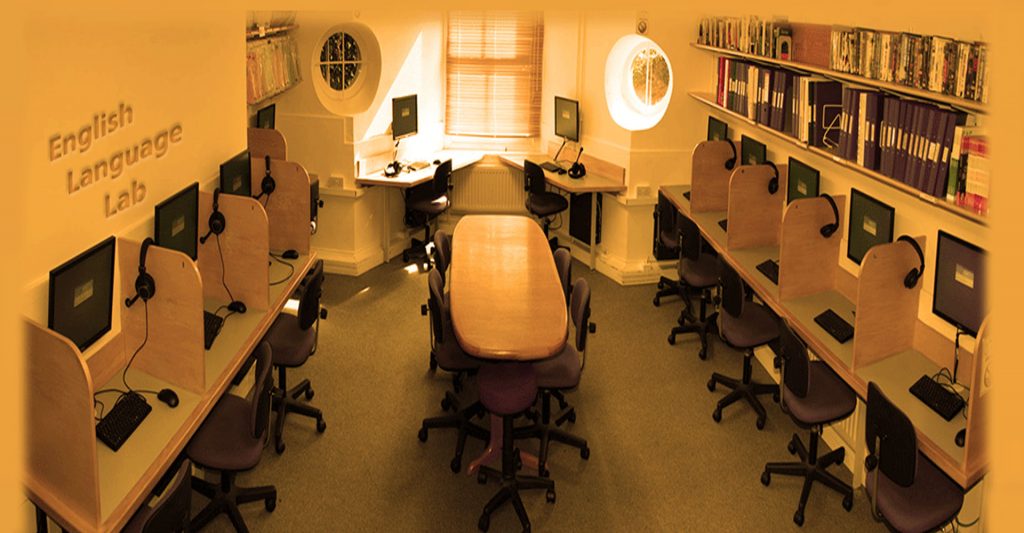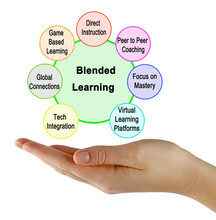The term “blended learning” refers to instruction that is both teacher-led and computer-based. The usage of technology has become a necessary component of learning in today’s modern environment. The demand to employ technology in the classroom is developing as quickly as technology itself, day by day. Today’s generation is already packed with gadgets so the learning with the use of technology is also an easy thing for them to grab. As I described in my previous introduction blog about my experience with online and blended learning, I have gained a lot of knowledge from hybrid learning. I was a college professor in the year 2015, where I have to taught phonetics to the language students. I was given access to the software in English language lab where students may use it to learn the phonetic sounds. This was the first time in my professional career that I learned about technology utilization in a language class. The pupils in my class learned about the speech sounds’ pronunciation, intonation, and modulation. Students were also really enthusiastic about this because they were able to individually learn all the sounds after they learned how to use the software, which helped to increase their confidence and language proficiency. I used to divide them into groups on daily basis and assigned some specific words for them to say correctly using syllables, stress, and vocal modulations. Because I could connect with students more flexibly in the English language lab than I could with them using the traditional style of teaching, it also helped me to teach them with ease.

The educational needs of students are met through blended learning, which increases convenience and flexibility, achieves and improves language learning skills, as well as helps students build critical thinking abilities. Students enjoy blended learning because there are various factors which gives satisfactory results in enhanced learning like its a flexible process where one can have access to both the web based learning as well as face to face interaction with the teacher. Moreover it makes the boring subjects interesting because a teacher can show videos, images and use various applications like Google Classroom, edX, Kahoot, Duolingo, Quizlet to embrace all the activities of collaboration, discussion, teamwork, interaction. Despite the fact that blended learning is popular in the modern world, both teachers and students still face some difficulties while using this method of instruction. It is primarily the teacher’s responsibility to stay abreast with technology. Since technology is changing quickly, it can be challenging to keep up with all of the latest software and applications. Prior to class, a teacher should be prepared with resources as well as the theory that will be covered in a lesson. When students are unable to learn on their own, it is occasionally a double task where a teacher is also responsible for posting information online at the request of the students and their parents. Another difficulty in hybrid learning is student management. By separating the class into groups, the teacher can assign different assignments to the pupils, making it easier to manage the class and focus on one group while the others are occupied with their tasks.

In addition to the difficulties teachers confront, students also encounter them. Although using technology makes it easier to remember things in the long run, it also has an adverse influence on students’ overall growth. In the conventional form of instruction, a teacher assigns students to accomplish practical tasks by creating models, projects, and charts; but, in blended learning, students can simply complete these tasks on their screens without learning the necessary hand skills. In conclusion, taking into account the benefits and challenges of blended learning, I can state that it is a simple process of learning provided everyone has easy access to the technology, as it shouldn’t be a financial burden for a teacher, student, or parent.
Hi Jashandeep!
I really enjoyed reading your post as it sparked a lot of connections for me and got me thinking about my own student’s familiarity with technology. As you’ve said, today’s generation is packed with so much technology and so many gadgets, students are often quite fluent with them and quickly pick up how to use new platforms very quickly. I find that I often have to remind myself that not all students have this capability. Just as not all of my students have easy access to books to help them become strong readers, not all of them have access to devices to help them become fluent uses of technology.
Thanks for sharing your experience! As a high school English teacher I connected with your example of using tech to build vocabulary/language acquisition. I use audiobooks in my class so if a students comes across a word they’re unfamiliar with while following along with their print text they can hear it pronounced. I also connected with your comment on students enjoying blended learning – they really do! Being able to keep their attention by switching back and forth between face-to-face instruction, an online activity, etc., is definitely an advantage in teacher planning and student engagement.